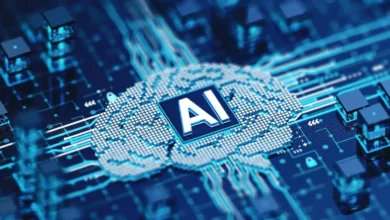Instanavigation: The Future of Seamless Travel and Navigation

In an increasingly connected world, the demand for instant access to information, efficient travel, and precise location services has grown immensely. This is where Instanavigation comes into play—a revolutionary concept that blends cutting-edge technology with real-time data to offer seamless navigation experiences. Whether you’re exploring a new city, navigating a sprawling airport, or simply trying to find the quickest route home, Instanavigation promises to be the ultimate solution.
What is Instanavigation?
At its core, Instanavigation refers to the integration of instantaneous, real-time navigation services with advanced technologies like artificial intelligence (AI), machine learning, and augmented reality (AR). Unlike traditional navigation systems that rely on static maps and delayed updates, Instanavigation offers users up-to-the-minute information, making it a powerful tool for both everyday commuters and global travelers alike.
How Instanavigation Works
The main advantage of Instanavigation is its ability to process and deliver information instantly. This is possible through a combination of:
- Real-time GPS tracking: Instanavigation leverages global positioning systems that can track movement in real time with a high degree of accuracy.
- AI and Machine Learning: These technologies predict the best routes, monitor traffic patterns, and even foresee potential delays based on historical data.
- Cloud Computing: Instanavigation utilizes cloud technology to ensure that vast amounts of data are processed swiftly, giving users instant access to route changes, live traffic updates, and more.
- Augmented Reality: AR is integrated to provide visual, real-world overlays. For example, you could use your phone’s camera to view directions projected onto the actual streets and surroundings in front of you.
Key Features of Instanavigation
- Real-time Updates: One of the primary benefits of Instanavigation is its ability to offer users live updates. This means no more outdated maps or surprise traffic jams—drivers and travelers receive real-time information on routes, road conditions, and travel times.
- Personalized Navigation: Through AI, Instanavigation learns the user’s preferences over time, suggesting routes and transportation methods tailored to their habits. For instance, frequent cyclists may receive routes optimized for bike lanes and safety, while car drivers might get updates on fuel-efficient routes.
- Augmented Reality Directions: AR adds an interactive layer to navigation. Instead of following 2D maps, users can simply point their device toward the road ahead and see directions overlaid onto their real-world surroundings. This innovation makes it easier to follow complex routes, particularly in urban areas with confusing intersections.
- Multi-modal Transport Integration: Instanavigation goes beyond just driving or walking directions. It integrates various modes of transportation—public transit, ridesharing, biking, and even electric scooters—offering seamless transitions between different forms of travel.
- Offline Access: Instanavigation also provides offline capabilities, allowing users to download maps and directions in advance for areas with poor connectivity, ensuring they’re never stranded without guidance.
Applications of Instanavigation
- Tourism: Instanavigation is a game-changer for tourists exploring unfamiliar locations. It can guide travelers to popular attractions, hidden gems, and local dining spots, all while factoring in the best route based on traffic, weather, and time of day.
- Urban Mobility: For city dwellers, Instanavigation helps reduce commute times by providing optimized routes that account for rush hour traffic, accidents, and public transportation schedules. Additionally, it supports multi-modal transport, making urban travel more flexible and efficient.
- Emergency Services: First responders, including police, firefighters, and paramedics, can benefit greatly from Instanavigation. By providing real-time updates on road conditions and the fastest routes, it helps ensure they can reach emergencies as quickly as possible.
- Logistics and Delivery: Instanavigation is revolutionizing logistics, especially for companies that depend on precise timing for deliveries. By integrating real-time traffic data and AI-driven route planning, delivery vehicles can optimize their routes for fuel efficiency and reduced travel times.
The Future of Instanavigation
The concept of Instanavigation continues to evolve as new technologies emerge. We can expect even more sophisticated integrations with smart cities, autonomous vehicles, and IoT devices in the near future. With advancements in 5G connectivity, the ability to process vast amounts of data instantaneously will enhance the accuracy and functionality of Instanavigation systems. This could result in a world where traffic jams are a thing of the past, and getting lost is impossible.
As Instanavigation becomes more widely adopted, we may also see its applications in fields such as outdoor recreation (like hiking and camping), drone delivery systems, and even space exploration. Ultimately, Instanavigation is set to redefine how we think about travel and navigation in a hyper-connected world.
Read also: Kelly Bates Asks Supporters Not to Take Out Their Anger on NBC 10
Conclusion
The world is moving towards faster, more efficient ways of doing everything, and navigation is no exception. Instanavigation represents the future of real-time, precise, and interactive navigation. Whether you’re a city commuter, a frequent traveler, or a logistics professional, Instanavigation offers the tools and technology needed to navigate the modern world with ease. Keep an eye on this revolutionary trend as it continues to reshape the landscape of transportation and navigation.



